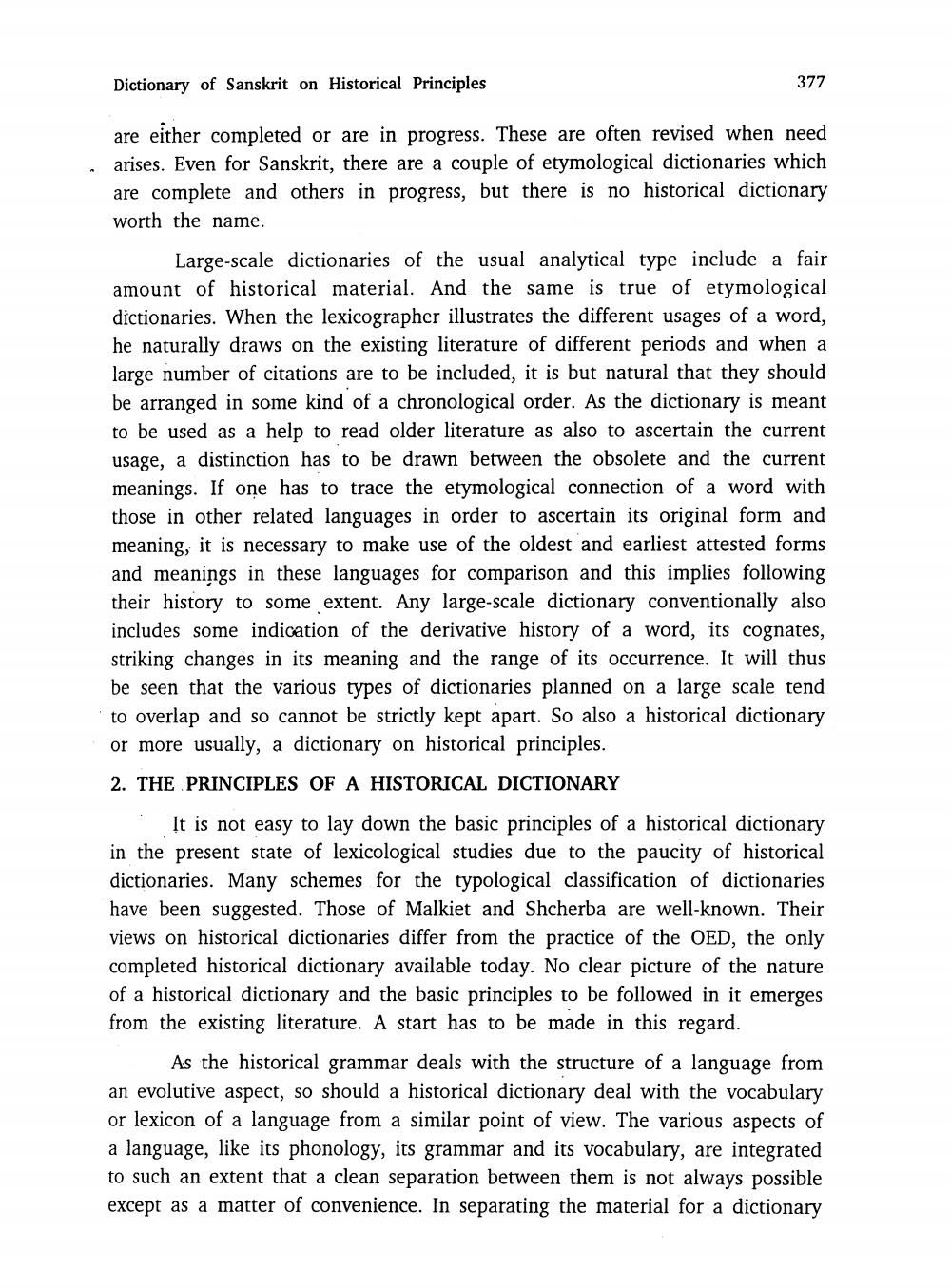________________
Dictionary of Sanskrit on Historical Principles
377
are either completed or are in progress. These are often revised when need arises. Even for Sanskrit, there are a couple of etymological dictionaries which are complete and others in progress, but there is no historical dictionary worth the name.
Large-scale dictionaries of the usual analytical type include a fair amount of historical material. And the same is true of etymological dictionaries. When the lexicographer illustrates the different usages of a word, he naturally draws on the existing literature of different periods and when a large number of citations are to be included, it is but natural that they should be arranged in some kind of a chronological order. As the dictionary is meant to be used as a help to read older literature as also to ascertain the current usage, a distinction has to be drawn between the obsolete and the current meanings. If one has to trace the etymological connection of a word with those in other related languages in order to ascertain its original form and meaning, it is necessary to make use of the oldest and earliest attested forms and meanings in these languages for comparison and this implies following their history to some extent. Any large-scale dictionary conventionally also includes some indication of the derivative history of a word, its cognates, striking changes in its meaning and the range of its occurrence. It will thus be seen that the various types of dictionaries planned on a large scale tend to overlap and so cannot be strictly kept apart. So also a historical dictionary or more usually, a dictionary on historical principles. 2. THE PRINCIPLES OF A HISTORICAL DICTIONARY
. It is not easy to lay down the basic principles of a historical dictionary in the present state of lexicological studies due to the paucity of historical dictionaries. Many schemes for the typological classification of dictionaries have been suggested. Those of Malkiet and Shcherba are well-known. Their views on historical dictionaries differ from the practice of the OED, the only completed historical dictionary available today. No clear picture of the nature of a historical dictionary and the basic principles to be followed in it emerges from the existing literature. A start has to be made in this regard.
As the historical grammar deals with the structure of a language from an evolutive aspect, so should a historical dictionary deal with the vocabulary or lexicon of a language from a similar point of view. The various aspects of a language, like its phonology, its grammar and its vocabulary, are integrated to such an extent that a clean separation between them is not always possible except as a matter of convenience. In separating the material for a dictionary




